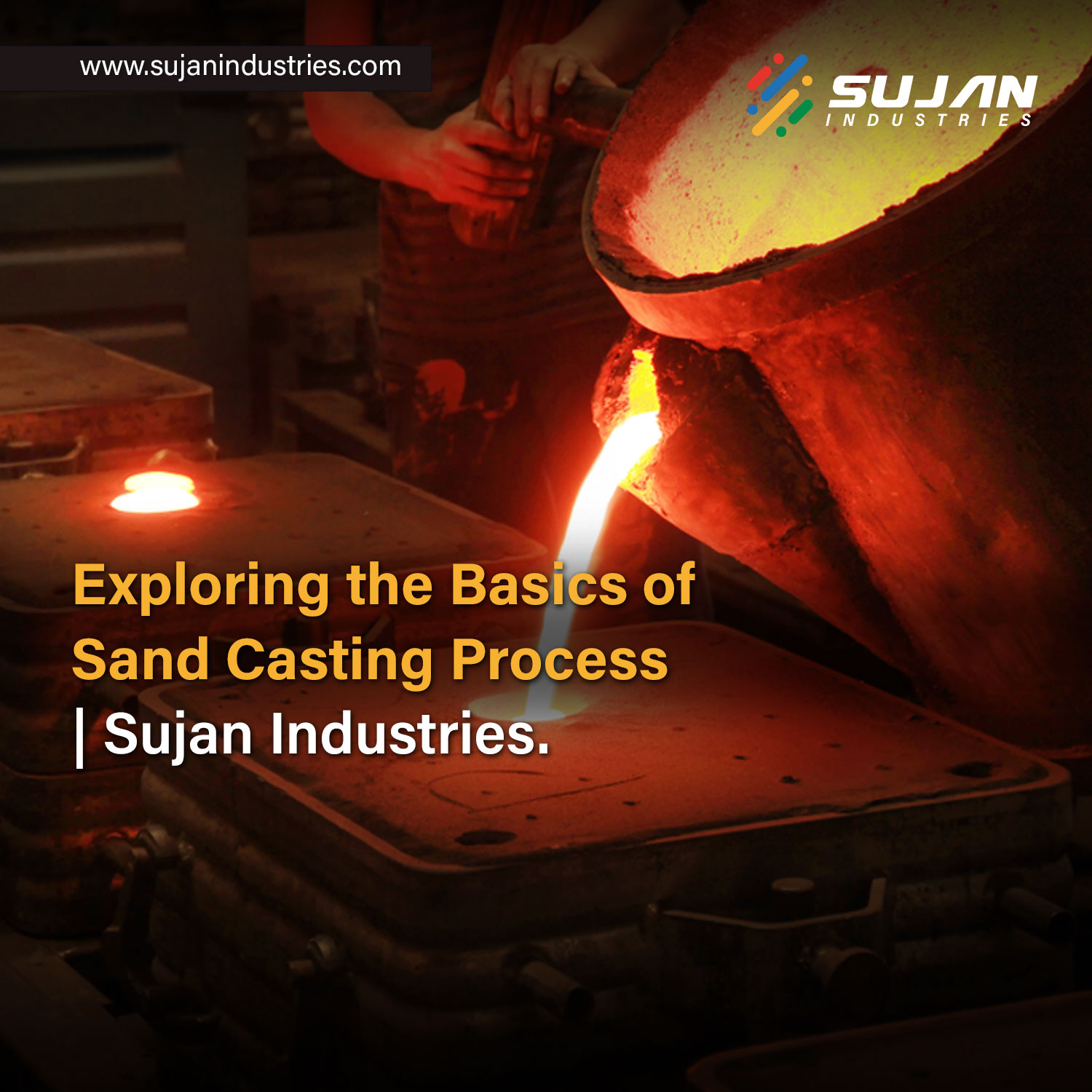
Sand casting, an ancient art refined over centuries, plays a pivotal role in manufacturing intricate mechanical parts used in automotive, aerospace, railways, and numerous other sectors. These small yet crucial components, often unnoticed, are fundamental in ensuring our modern conveniences and machines and systems operate flawlessly across various industries.
From the intricate parts in your car to the robust machinery in factories, the sand casting process is behind the formation of many critical components integral to our daily lives.
In this blog, we’ll understand the basics of the sand casting process, the advantages, and why Sujan Industries can be your preferred choice for custom-made sand casting products.
Sand casting, also known as sand-molded casting, is a versatile and widely used process for shaping metal parts. In this method, Sand is used to make a mold into which liquid metal is poured, forming metal components of various sizes, shapes, and complexities. This method is applicable to nearly all metal alloys.
The process entails carving hollows in wet sand filled with molten metal. The metal takes the desired shape as it cools and solidifies. The key to effective sand casting lies in the sand used. Unlike regular sand which breaks apart easily, molding sand is mixed with a unique bonding material. This enhancement improves the Sand’s capacity to endure high temperatures and maintain its form throughout the casting process, ensuring precision and durability in the final metal product.
Sand casting is widely used due to its cost-effectiveness and versatility. It’s inexpensive and can be easily formed into various shapes and sizes, making it ideal for creating diverse moulds. Its excellent insulating properties and ability to withstand extremely high temperatures enhance its suitability for various applications. Additionally, sand is recyclable, making it a sustainable choice in the sand casting process across various industries.
From engine components to complicated industrial and mechanical elements, sand-casted components find use in the automotive, aerospace, construction, and manufacturing industries.
Advantages of Sand Casting
At Sujan Industries, the sand casting process involves the following key steps:
These steps collectively ensure the efficient and precise production of metal components through sand casting, a metal fabrication method renowned for its versatility and efficacy.
Quality Control
Experts at Sujan Industries follow stringent quality control procedures in the sand casting process. This involves examining the molds for precision, monitoring the temperature and composition of the metal, and more.
The Environmental Aspect
We use environmentally friendly methods in our industrial operations, striving to reduce waste and recycle resources wherever feasible. The sand used in casting is often reusable, lowering the environmental effect.
Quality Tests & Inspection
We conduct a number of inspection tests and post-casting checks to verify that each item fits the specified standards to ensure only the best quality products reach our clients.
Read More – Metal Sand Casting : Process Cycle ,Design , And Equipment
Sujan Industries – A Reliable Custom-Made Sand Casting Manufacturer And Supplier
The sand casting method combines art and technology that has lasted the test of time. Sujan Industries is also one of the well-known stainless steel casting manufacturers in India that offers a wide range of high-quality, customized components for various industries.
Bringing together the tradition of quality and advanced technological developments, we are committed to ensuring high standards of product quality and technical excellence.
For product offerings, business inquiries, or more information, contact our experts at Sujan now and let them help you get the best.